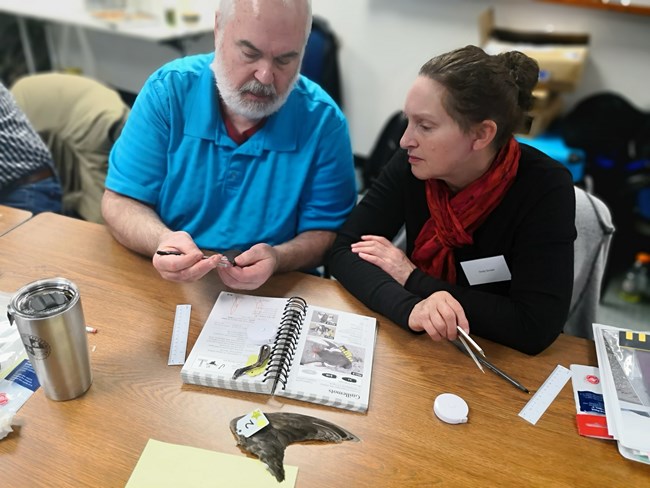
NPS/Jim Pfeiffenberger
"Courses like this just absolutely, totally rejuvenate me."
-2018 Floating Teacher Workshop participant
The Ocean Alaska Science and Learning Center offers teacher workshops to connect educators and scientists throughout Alaska in two different formats. The first is a weekend-long, classroom-based workshop, while the second offers a multi-day experience that takes place both in the classroom and in the field.

NPS/Jim Pfeiffenberger
Classroom Teacher Workshop
The OASLC hosts a 3-day classroom workshop each fall in collaboration with the Alaska SeaLife Center. Typically held in Seward, Alaska, this workshop is generally geared toward elementary teachers. Workshops provide educators with first-hand knowledge of current marine issues and research in Alaska.
Classroom workshop topics have included culturally relevant teaching, incorporating indigenous perspectives into the classroom, citizen science, coastal and marine ecology and collaborative ways to share lesson plans and place-based resources.

NPS/Jim Pfeiffenberger
Field-Based Workshop
OASLC’s Education Coordinator leads a field-based teacher workshop each summer in partnership with Alaska Geographic. This collaborative one-week experience provides teachers with engaging ways to incorporate ocean issues and scientific research into their teaching. Educators participate in a two-day classroom workshop where they engage with culture bearers and learn about the glaciology and ecology of the area. The remainder of the workshop takes place aboard a charter boat in a remote fjord estuary ecosystem. Teachers experience the national park through kayaking and hands-on research with scientists in the field.
The goal of this course is to enhance educators’ understanding of marine science and coastal research in Alaska’s National Parks, and to empower them to share this knowledge with students through culturally relevant, place-based and audience centered education.
Helpful Details
The target audience for both workshops varies from year to year, ranging from K-12th Grade teachers. Priority is given to Alaska educators, however instructors from outside the state are also welcome. Dates of all upcoming workshops and links to apply will be posted on this webpage as they come available. For more information on upcoming OASLC teacher workshops, contact Education Coordinator Fiona North.
Last updated: September 27, 2024
